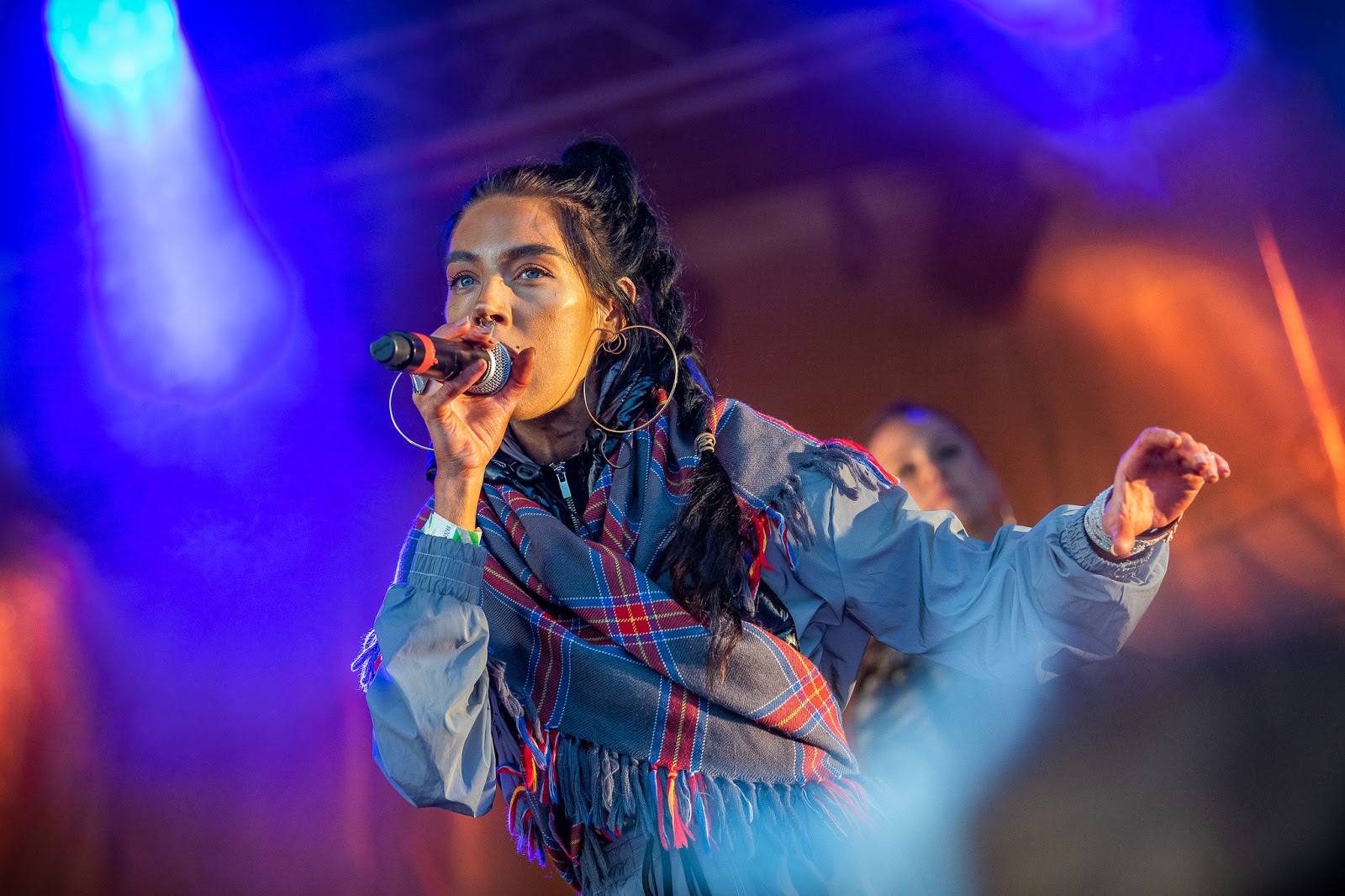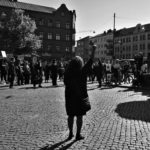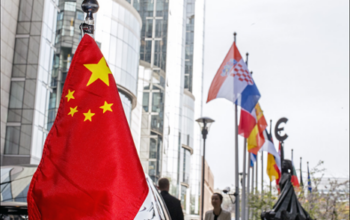The joik is the traditional music of the Sámi, the indigenous people of northern parts of the Fennoscandian Peninsula. It’s scales differ from those of Western music, it is purely vocal and if it includes instruments, it’s drums – at least that’s how it’s been for generations. Now a new generation of Sámi musicians is combining traditional joiking with other genres such as pop, jazz and hiphop – and in recent years the music of artists like Sofia Jannok and Maxida Märak has become increasingly popular.
They not only mix joiking with other musical styles, but also the music itself with activism for Sámi rights and environmental protection, as well as against racism. The colonial oppression of the Sámi people is reflected in songs such as Snölejonnina (“Snow lioness”, Sofia Jannok) and Andas (“Breathe”, Maxida Märak). And in This Is My Land Sofia Jannok sings: “This is my home, this is my heaven, this is the earth where I belong and if you want to ruin it all with big wounds in the mountains then you’re not worthy of listening to this song.“
A history of oppression
Starting in the late Middle Ages and lasting well into the 20th century, the Sámi were subjected to colonial discrimination and assimilation policies. Race biology that was supposed to prove the Sámi’s racial inferiority served as justification to take their land from them. Joiking was discouraged and, since it served as refuge from and a form of resistance to colonial oppression, it was later banned. Likewise, the Sámi were forbidden from speaking their own language. By the time these assimilation policies were officially ended, both joiking and Sámi languages had disappeared from several regions.
Since then Fennoscandian countries have granted the Sámi language and cultural rights, although, unlike Norway, Sweden and Finland have not ratified the ILO’s convention of indigenous people. The Sámi have schools teaching their language, as well as their own parliaments. But still, it would be naive to say that the north of Europe has left behind colonial discrimination in its entirety. “It’s like ‘Do you even exist?’ (…) That has been, and still is, very challenging, especially living in a society that is considered the most democratic in the world”, said Sofia Jannok in an interview with NewsDeeply. And in an Amnesty International campaign video, Maxida Märak stated that “to me the violation are the same as they were 400 years ago. Only that they’ve been modernised.”
An ongoing struggle
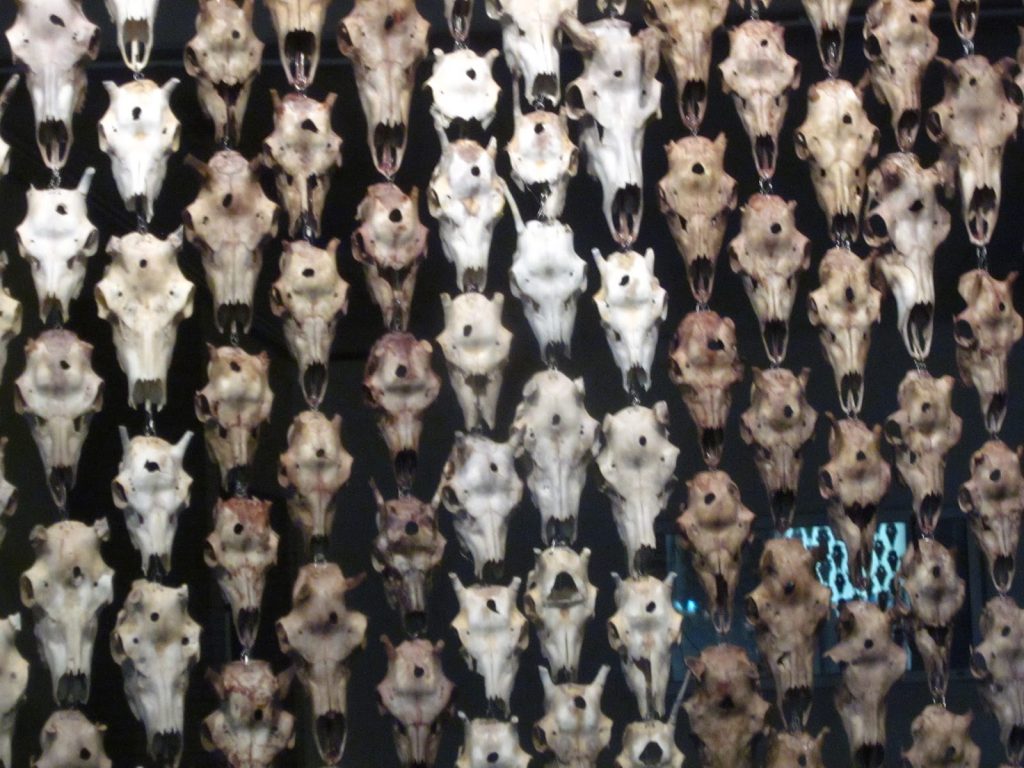
With a law passed in 2007 the Norwegian government is limiting the size of reindeer herds. Not only might smaller herds lead to a smaller income which could result in their herding licences being revoked by the state should they not make enough profit, but for the Sámi, reindeer herding is more than a job, it is a way of life and an integral part of their culture. Therefore, because he “could not see my culture die”, reindeer herder Jousset Ante Sara sued the Norwegian state. Elle Márjá Eira, whose father launched another case against the state due to an energy project that threatened to diminish their summer grazing lands, pointed out that they would have to find another, not yet occupied, place for their reindeer. “By pushing us into smaller areas they are forcing us into conflicts with each other.”
The ongoing struggle of the Sámi is not only tied to political conflicts, but also to social issues. In 2016, the Arctic village Girjas (Sweden) was granted exclusive rights over hunting and fishing which the Swedish state had taken from the Sámi in 1993. Not only were the state lawyers accused of using “rhetorics of race biology”, but the village’s Chairman, Matti Berg, faced threats of violence when the case began as many local Swede’s are worrying that their snowmobiling and hunting activities will be further restricted in future. And both in the real and the virtual world a multitude of examples of hate against Sámi can be found: from insults, over accusations that Sámi herders kill their own reindeer to reap financial compensation, to (often unsolved) cases of killed reindeer.
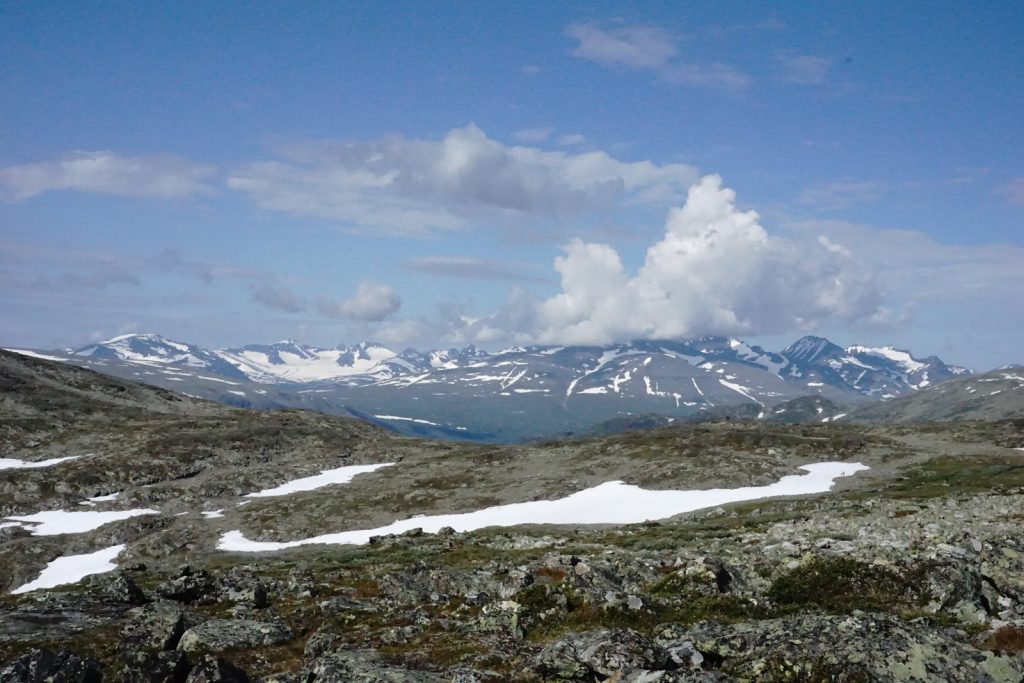
Over the last 100 years undisturbed reindeer habitat has decreased by 70%. Lapland is not only serene mountains, endless snow fields under northern lights and rocky, mosquito-haunted plains; the land holds resources that conjures up dollar signs in some people’s eyes. In Sweden, which provides 90% of the EU’s iron ore, there are around 1000 mines. Most of them are located on traditional Sámi land where pasture land is reduced by the mines and the areas flooded to store – at times toxic – mining waste. Certainly, the mining industry creates jobs and offers a possibility to keep up the declining population of places such as Jokkmokk. But at the same time it poses a threat to wildlife and the traditional way of life of the Sámi. At the same time, the timber industry is replacing ancient forests holding a variety of tree species of different height and age creating an uneven canopy under which snow can accumulate unevenly leaving some areas grazeable with monoculture plantations. There, the trees grow fairly evenly resulting in a more uniform snow blanket that makes it harder for the reindeer to find food.
In addition, global warming might make free access to even more resources in northern Europe: not only are 5-13% of the world’s untapped oil and 20-30% of the world’s untapped gas located in the Barents region, the melting of Arctic ice would also open new shipping routes. It is this development on which Finland’s proposal to build a €2.9 bn railway to Europe’s first Arctic port in Norway is based. The railway would cut off the reindeer’s migration routes in six different herding areas, and could lead to reindeer being run over by trains. This infrastructure would make it possible for companies to encroach even further on the still untouched parts of Lapland. Sámi parliament president Tiina Sanila-Aikio told The Guardian that she only heard about the project in the media.She describes government and company practices as a “slow colonisation” that functions by dividing the land with railways and handing it over to outside industries.

Reindeer are an integral part of Sámi culture and way of life, but also of the Arctic ecosystem. Without reindeer fast growing grasses and shrubs will no longer be kept in check leading to less plant diversity and the higher growing shrubs creating a more uneven layer of snow that reflects less sunlight and thus contributes to increased global warming. Finish climate scientist Tero Mustonen argues that Lapland will be fundamentally transformed by the railway running through areas providing us with climate security. On top of that, it is a project that depends on global warming. Global warming, which threatens the survival of reindeer as spikes of warm winter weather lead to the melting and refreezing of snow. Thus, layers of ice appear on the ground that trap lichen – reindeer’s main winter food supply – underneath. The Sámi’s reindeer are then either at risk of starving or the reindeer herders must bear the extra cost of feeding their animals throughout the winter.
Music as activism
“In Saami I don’t have to say ‘This is our land’, ‘We are still here’, (…) it’s like saying planet Earth is round (…) But when I write in Swedish and English I have to write the most basic stuff”, Sofia Jannok explains the difference between her Swedish and English, and Sámi song texts. She says that she started writing in Swedish and English when she addressed people in power in her head. “By the reactions of listeners, politicians and journalists, I realized how necessary it was that we actually use words so that people understand (…).”
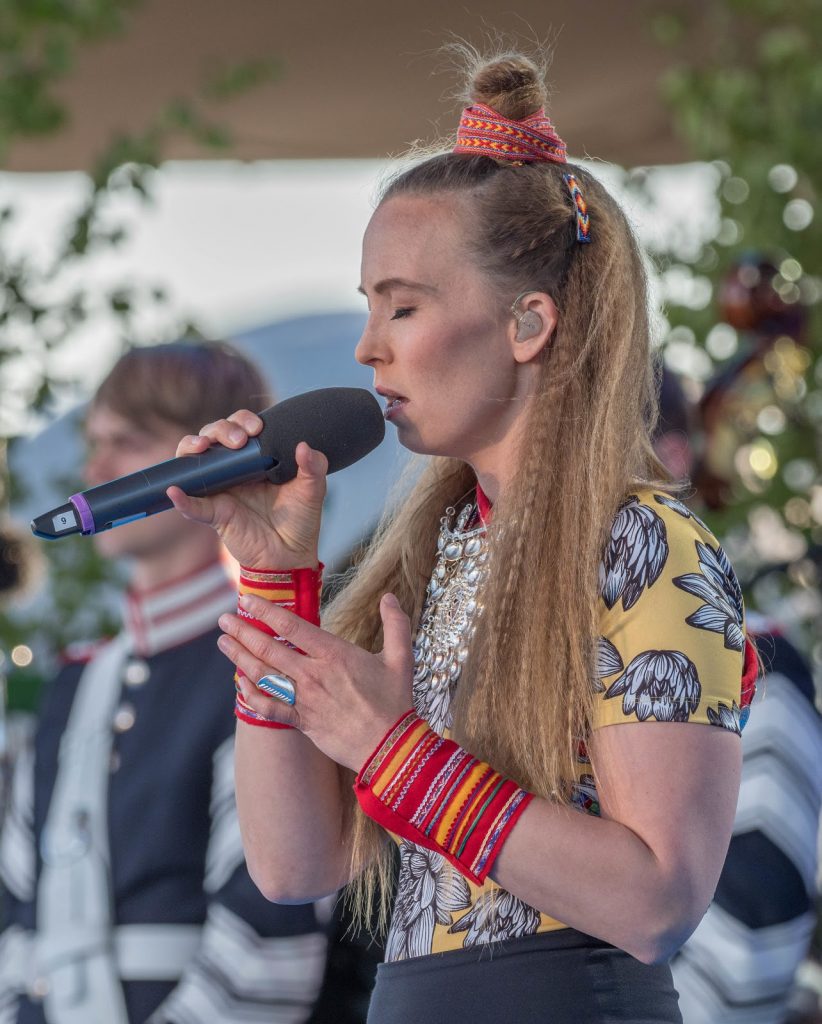
In Swedish schools not much is taught on the subject of the Sámi and their oppression, and often inaccurate information is mixed into the little that is taught: “But I can put it in a song and tell the truth through arts. And I think that is a more efficient way, and actually truer too, because the politicians and people in power are always describing our society with a hidden agenda.” In that sense, Sofia Jannok believes, music can be an effective tool of activism and decolonisation. Maxida Märak, too, argues that culture, including music, has contributed to the improvement of conditions for Sámi people, and remains important as “it was not neutral to have racists in the government (…) and now they sit in Parliament” and point to groups, including the Sámi, they perceive as a threat to Swedish society. “People watch World War II movies and talk about how it could happen, but it’s exactly the same thing that is happening now (…)”
by Merle Emrich
Photo Credits
Sofia Jannok EM1B1389, Bengt Nyman, CC BY 2.0
DSC_4496_Maxida Márak, Riddu Riddu, CC BY-SA 2.0
A day at work, Mats Andersson, CC BY 2.0
Documenta 14 Máret Ánne Sara, Merle Emrich, All Rights Reserved
Sarek Nationalpark, Merle Emrich, All Rights Reserved
